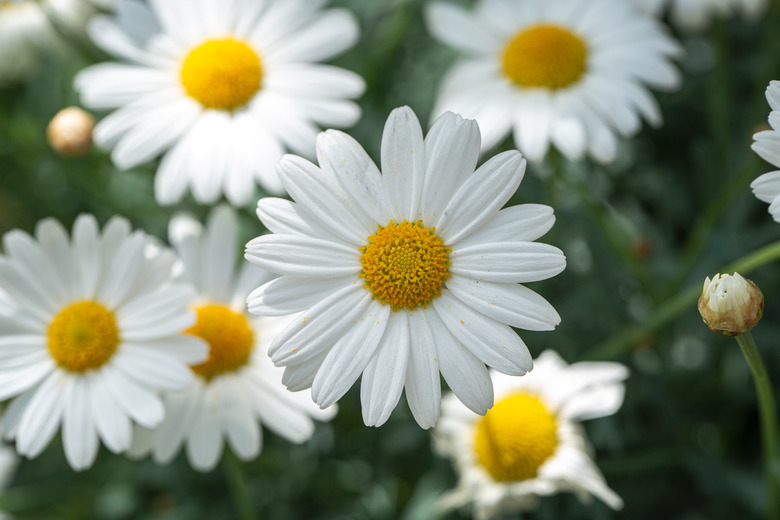How To Prune Daisies
We may receive a commission on purchases made from links.
Daisies are the "love me, love me not" flowers that kids use to make necklace chains, and gardeners love to plant them in the garden for their bright, many-petaled blossoms. Low maintenance and deer-resistant, daisies are perfect for beginners and delightful in a cottage garden. Some daisies are grown as perennials, living more than one season, while other daisies are grown as annuals and replaced every spring. It is important to prune daisies during the growing season to keep the blooms coming. Perennial daisies must also be pruned to prepare them for winter.
Anyone who loves growing daisies will want to know how and when to prune these popular flowering plants.
Perennial Daisies and Their Hardiness Zones
Perennial Daisies and Their Hardiness Zones
Since a daisy's status as a perennial depends on the hardiness zone, it's important to know the USDA zones of the most common daisies in order to determine whether they will be perennial in your location. Most are hardy in zones 5 to 8 or 9, and these are called hardy perennials. Here are some of the most common species hardy in USDA zones 5 to 9, with those that are tender perennials noted.
- Common daisy (Bellis perennis)
- Shasta daisy (Leucanthemum x superbum)
- Marguerite daisy (Argyranthemum frutescens), tender perennial in USDA zones 10 to 11
- Oxeye daisy (Leucanthemum vulgare)
- Gerbera daisy (Gerbera jamesonii), tender perennial in USDA zones 8 to 11
- Painted daisy (Tanacetum coccineum)
- African daisy (Osteospermum spp.), tender perennial in USDA zones 9 to 11
- Purple coneflower (Echinacea purpurea)
- Black-eyed Susan (Rudbeckia hirta)
How to Prune Daisies
How to Prune Daisies
Pruning daisies is quite a different operation than pruning back trees or shrubs. Rather than snipping off branches at leaf nodes in late winter, those who prune daisies pinch back the stems to keep the plants compact and deadhead the plants during the growing season. The idea of deadheading is to remove the wilting or spent daisies and encourage more daisy blooms. Similar steps apply to most species.
Dividing Perennial Clumping Daisies
When clumping daisies are hardy in your region, pruning actually involves dividing the clumps. This is the case with gerbera daisies with multiple crowns, for example. Act during the growing season.
- Dig up the plant, including its root ball.
- Use a clean, sharp knife or pruning shears to separate the crowns.
- Remove
any dead roots, old decaying leaves, and one half of all the lower
mature leaves. - Replant your gerbera daisies immediately, keeping the roots moist until they have reestablished.
Pruning Daisies Grown as Perennials
Daisies grown as perennials last for more than one growing season in your garden beds. The pruning procedure for these perennial flowers begins in early spring before the new foliage begins to appear. This includes Shasta daisies if they are perennial in your area. Pruning continues throughout the growing season and can last year-round in warm-winter areas.
-
Remove dead or damaged
stems and foliage in early spring. -
Cut back the stems to just a few inches above the soil line with sharp pruners in early spring.
-
In a process known as deadheading, prune out spent flowers as they wilt to prevent the formation of seed heads. This redirects energy toward creating more blooms. Pinch out individual wilted flowers or use a pruner.
-
Remove any crossed or crowded stems from the daisy plant, cutting them back with pruners.
-
Prune to winterize the plants (see below).
Pruning Daisies Grown as Annuals
When you are growing daisies as annuals outside their hardiness zones, the main type of trimming to consider is deadheading — that is, removing wilting flowers to encourage new flower buds. This can begin in spring or summer when the first flowers start to wilt, and it can continue until the first frost in early fall.
The deadheading process is the same as for garden daisy species grown as perennials: Pinch or snip off any flower heads that are wilting or have died.
How to Winterize Daisies
How to Winterize Daisies
Winterizing daisies can mean cutting back perennial daisies to the ground in the fall after they turn brown or waiting until spring to do this. There is no better plan; either one can work well. Those gardeners who like clean beds in the winter or wish to discourage wildlife feeding might prefer acting in the fall, while other gardeners love to feed wildlife during the winter months and enjoy the plants for their winter interest. However, prune back daisies in fall if they are attacked by insects or diseases.
Mulch perennial daisies once the ground freezes. Layer several inches of organic mulch to insulate the ground from the cold as well as the freeze/thaw/freeze temperature cycles.
Need to see the process visually? Check out this video from ExpertVillage Leaf Group:
